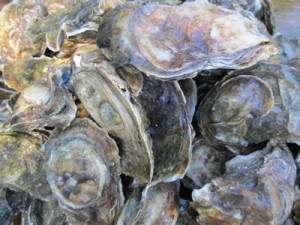 Aquaculture researchers with the NOAA National Centers for Coastal Ocean Science (NCCOS) Cooperative Oxford Laboratory in Oxford, Maryland, are helping the Severn River Association test cost-saving oyster restoration techniques in the Severn River.
Aquaculture researchers with the NOAA National Centers for Coastal Ocean Science (NCCOS) Cooperative Oxford Laboratory in Oxford, Maryland, are helping the Severn River Association test cost-saving oyster restoration techniques in the Severn River.
The Severn River Association was awarded funds from the Chesapeake Bay Trust and the Chesapeake Oyster Alliance to deploy oyster larvae (Crassostrea virginica) directly onto the river bottom using novel techniques.
The proposed methods build on ongoing science by NCCOS and partners to develop an alternative oyster planting method that reduces the reliance on oyster shell, significantly lowering the overall cost of oyster stock enhancement efforts.
The Severn River is part of Maryland’s oyster sanctuary network, which is closed to commercial harvest. Researchers at the Severn River Association hope to enhance the oyster population within the sanctuary to improve the sanctuary’s ecological function and increase local oyster broodstock biomass. Traditional restoration techniques rely on reclaimed oyster shells as attachment substrate for young oysters at hatcheries.
The techniques currently being tested at the NCCOS Oxford Lab and adapted by the Severn River Association eliminate the need for reclaimed oyster shells by placing competent oyster larvae onto other suitable substrates in the river. These techniques have shown promise on small-scale research reefs and are currently being tested at larger scales by state and county resource managers in collaboration with NOAA.
source: NOAA National Centers for Coastal Ocean Science
Leave a Reply
You must be logged in to post a comment.